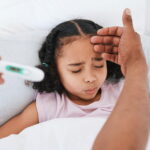Crimean-Congo hemorrhagic fever (CCHF) is caused by an infection with a tick-borne virus (Nairovirus) from the Bunyaviridae family. The infection was initially identified in Crimea in 1944 and officially named Crimean hemorrhagic fever. It was subsequently identified in 1969 as the etiology of infection in Congo, contributing to the disease’s present name. Learn more or get consultations regarding this disease from Doctoroncall website.
Humans infected with CCHFV potentially develop asymptomatic, mild, severe, or even deadly symptoms. The course and result of the disease are determined by the specific features of the vector, the virus strain, and the host, as well as vector-pathogen-host interactions. Until recently, laboratory investigations on these interactions were restricted because of the high degree of containment necessary for CCHFV and the unavailability of an animal model.
CCHF has the broadest geographical distribution of almost any tick-borne virus that causes infections in humans, and the second-widest geographical distribution of any arbovirus, behind the Dengue virus. During the 20th century, the biggest CCHF epidemics occurred in the ex-Soviet Union (e.g., Crimea, Rostov, Astrakhan), Bulgaria (1105 cases documented between 1953 and 1974), and China (260 farmers diagnosed between 1965 and 1994 in the Xinjiang area, with an 80 percent reported death) (probably biassed because only the most severe cases were recorded). The primary epidemic areas are now in the Middle East (Turkey and Iran), with over 10,000 cases confirmed in Turkey since 2002.
Transmission of Crimean-Congo Hemorrhagic Fever (CCHF)
The CCHF virus is spread to humans by tick bites or contact with infected animal blood or tissues during and right after slaughtering. The majority of incidences have involved people working in the poultry business, such as agricultural laborers, slaughterhouse employees, and veterinarians.
Human-to-human transmission could happen by direct contact with infected human blood, saliva, organs, or other body fluids. Hospital-acquired infections also can emerge as a result of poor hygiene of medical instruments, reusing of needles, and exposure to medical supplies.
The CCHF virus has been recognized in approximately 30 distinct tick species. The Hyalomma marginatum tick is the most important vector in the Ixodes genus because it can:
- attain the virus when feeding on an infected host. The virus replicates inside the tick’s intestinal wall and travels to different tissue types, with salivary glands and reproductive organs having the most significant titers.
- The virus can be transmitted vertically throughout all of its life stages (larva, nymph, and adult).
- Females pass the virus to their offspring through the transovarial route. Since a female produces thousands of eggs, even a modest transovarial transmission rate is sufficient to make a comparatively large population of infected ticks alive.
- Transmitted horizontally when several ticks are present on the same host animal since infected ticks instantly inject the virus into the host’s circulation upon biting.
Who are at risk for this disease?
Living in or going to a location where a certain viral Doctoroncall is widespread can increase your risks of being infected with that virus. Other factors that might influence your risk are as follows:
- Interacting with infected patients.
- Slaughtering or ingesting infected animals.
- Sharing affected needles to use intravenous drugs.
- Having sex that is unprotected.
- Working in an open environment or in rat-infested facilities.
- Being in contact with contaminated blood or other bodily fluids.
How can you prevent CCHF
Protect yourself from infection by wearing suitable protective layers while interacting with blood or bodily fluids. Wear gloves, eye and face coverings when handling, disinfecting, and disposing of lab specimens or wastes.
Get a vaccination
The yellow fever vaccination is generally acknowledged as safe and effective. Serious adverse effects, on the other hand, could arise in rare situations. Yellow fever vaccination is not advised for children under the age of 9 months, pregnant women, particularly during the first trimester, or those with impaired immune systems.
Stay away from mosquitoes and ticks.
Avoid these insects at all costs, particularly if you are traveling in countries where viral hemorrhagic fevers are common. Wear proper, light-colored pants and long-sleeved clothes. If possible, avoid going outdoors at night and early morning, when mosquitoes are most active, and apply insect repellent with a DEET content of 20% to 25% to your skin and clothes. Use mosquito nets and mosquito coils if you’re staying in tented camps or lodges.
Take extra precautions against rodents.
If you stay in an area where there are outbreaks of viral hemorrhagic fevers, take the following precautions to keep rodents out of your houses:
- Pet food should be kept covered and in rodent-proof packaging.
- Rubbish should be placed in rodent-proof bins, and the bins should be cleaned on a regular basis.
- Properly dispose of waste.
- Check that all doors and windows have tight-fitting screens.
- Woodpiles, brick stacks, and other materials should be kept at least 100 feet away from your home.
- Keep your lawn mowed regularly.











